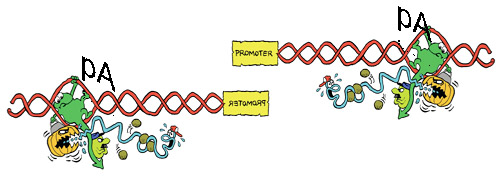A novel strategy to sort functional from non-functional RNA
Most of the human genome is transcribed, yielding RNA from >75% of its DNA. It is presently intensely debated how much of this material is functional. A collaborative study between researchers at Aarhus and Copenhagen Universities has resulted in a method to help address this problem.
 In addition to its ~20.000 protein-coding genes, the human genome harbors an even larger number of genes encoding the so-called ‘non-coding RNAs’ (ncRNAs). While some ncRNAs are clearly critical to cells, there is an ongoing and heated debate about how many have clear molecular functions. Researchers at Copenhagen University and Aarhus University have now devised a combined experimental and computational method, which classifies non-coding RNAs based on their biochemical properties inside human cells.
In addition to its ~20.000 protein-coding genes, the human genome harbors an even larger number of genes encoding the so-called ‘non-coding RNAs’ (ncRNAs). While some ncRNAs are clearly critical to cells, there is an ongoing and heated debate about how many have clear molecular functions. Researchers at Copenhagen University and Aarhus University have now devised a combined experimental and computational method, which classifies non-coding RNAs based on their biochemical properties inside human cells.
The strategy relies on a systematic categorization of human RNAs by the nature of their transcription initiation, by their overall expression levels and by their sensitivity to the RNA-degrading exosome complex. These measures are surprisingly effective at correctly classifying annotated transcripts, including ncRNAs of known function.
Although, the project revealed that most ncRNAs are degraded faster than protein-coding mRNAs, it also identified uncharacterized stable lncRNAs, hidden among a vast majority of unstable transcripts. This implies that most ncRNAs do not have functions that require high cellular levels – but those who have can be pinpointed. The article, which was spearheaded by postdoctoral fellow Robin Andersson and Peter Refsing Andersen from the groups of professors Albin Sandelin and Torben Heick Jensen, respectively, is online at the prestigious Nature Communications journal.
Contact
Albin Sandelin
+45 224 56668
albin@binf.ku.dk
Contact
Professor Albin Sandelin
Department of Biology
University of Copenhagen
Phone +45 224 56668
Email: albin@binf.ku.dk
Communications officer
Helle Blæsild
Department of Biology
Phone: +45 2875 2076
Email: helleb@bio.ku.dk
